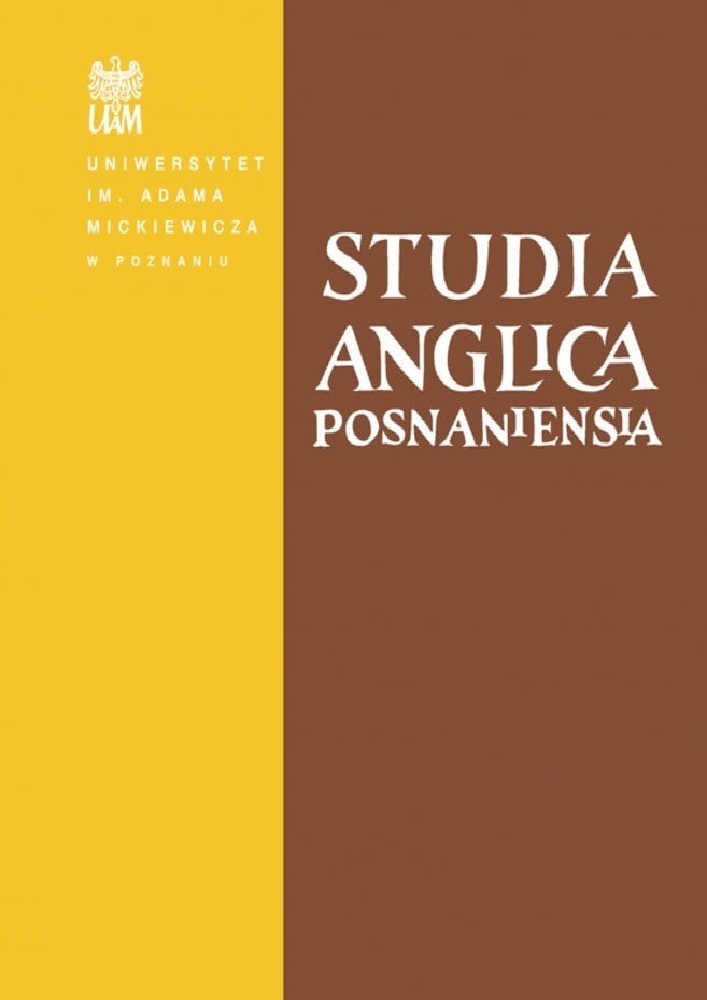Abstract
This article uses Charles S. Peirce’s concept of icon and Judith Butler’s idea of genealogy of gender to study levels of fictionality in the Old English poem Beowulf. It shows that Wealhtheow, the principal female character in the epic, operates as a diegetic reader in the poem. Her speeches, in which she addresses her husband King Hrothgar and Beowulf contain implicit references to the Lay of Finn, which has been sung by Hrothgar’s minstrel at the feast celebrating Beowulf’s victory. It is argued here that Wealhtheow represents herself as an icon of peace-weaving, as she casts herself as a figuration of Hildeburh, the female protagonist of the Lay of Finn. Hildeburh is the sister of Hnæf, the leader of the Danes, and is given by her brother to Finn the Frisian in a marriage alliance. In her role as a peace-weaver, the queen is to weave peace between tribes by giving birth to heirs of the crown. After the courtly minster’s performance of the Lay, Wealhtheow warns her husband against establishing political alliances with the foreigner Beowulf at the expense of his intratribal obligation to his cousin Hrothulf, who is to become king after Hrothgar’s death.
References
Bonjour, Adrien. 1968. The digressions in Beowulf: The Finn and Heathobards episodes. In: Martin Stevens & Jerome Mandel (eds.), Old English literature: Twenty-two analytical essays, 319-328. Lincoln: University of Nebraska Press.
Bosworth, Joseph and T. Northcote Toller (eds.). 1882. An Anglo-Saxon dictionary. Oxford: Oxford University Press.
Butler, Judith. 2004. Perfomative acts and gender constitution. In: Julie Rivkin & Michael Ryan (eds.), Literary theory: An anthology, 900-911. Malden: Blackwell Publishing.
Butler, Judith. 2008. Gender trouble. Feminism and the subversion of identity. New York and London: Routledge.
Camargo, Martin. 1981. The Finn episode and the tragedy of revenge in Beowulf. Studies in Philology 78(5). 120-134.
Chance, Jane. 1986. Woman as hero in Old English literature. Syracuse, New York: Syracuse University Press.
Damico, Helen. 1984. Beowulf’s Wealhtheow and the Valkyrie tradition. Madison, Wisconsin: The University of Wisconsin Press.
Dockray-Miller, Mary. 1999. Motherhood and mothering in Anglo-Saxon England. New York: St Martin’s Press.
Dockray-Miller, Mary. 2006. Beowulf’s tears of fatherhood. In: Eileen Joy & Mary K. Ramsey (eds.), The post-modern Beowulf: A critical casebook, 439-466. Morgantown: West Virginia University Press.
Earl, James W. 1994. Thinking about Beowulf. Stanford, California: Stanford University Press.
Fulk, R. D, Robert E. Bjork & John D. Niles (eds.). 2008. Klaeber’s Beowulf. (The fourth edition.) Toronto: University of Toronto Press.
Genette, Gerard. 1972. Narrative discourse: An essay in method. (Translated by Jane E. Lewin.) Ithaca: Cornell University Press.
Gradon, P. O. E (ed.). 1958. Cynewulf’s Elene. Frome and London: Methuen.
Greenfield, Stanley B. & Daniel G. Calder. 1986. A new critical history of Old English literature. New York and London: New York University Press.
Gwara, Scott. 2008. Heroic identity in the world of Beowulf. (Medieval and Renaissance Authors and Texts 2). Leiden and Boston: Brill.
Head, Pauline. 1997. Representation and design: Tracing the hermeneutics of Old English poetry. Albany: State University of New York Press.
Hill, John M. 1995. The cultural world in Beowulf. Toronto: University of Toronto Press.
Hill, John M. 2008. The narrative pulse of Beowulf: Arrivals and departures. Toronto: University of Toronto Press.
Horner, Shari. 2001. Discourse of enclosure. Representing women in Old English literature. New York: State University of New York Press.
Jurasiński, Stefan. 2004. The ecstasy of vengeance: Legal history, Old English scholarship, and the ‘Feud’ of Hengest. Review of English Studies 55. 641-661.
Kaske, R. E. 1963. Sapientia et Fortitudo as the controlling theme of Beowulf. In: Lewis E. Nicholson (ed.), An anthology of Beowulf criticism, 269-310. Notre Dame, Indiana: University of Notre Dame Press.
Levi-Strauss, Claude. 1969. Elementary structures of kinship. (Translated from French by James Harle Bell and John Richard von Sturmer.) Boston: Beacon Press.
Malone, Kemp. 1926. The Finn episode in Beowulf. The Journal of English and Germanic Philology 25(1). 157-172.
Olsen, Alexandra Hennessey. 1984. Speech, song, and poetic craft: The artistry of the Cynewulf canon. (English Language and Literature Vol. 15.) New York: Peter Lang.
Overing, Gillian R. 1990. Language, sign and gender in Beowulf. Carbondale and Edwardsville: Southern Illinois University Press.
Pasternack, Carol Braun. 2006. The textuality of Old English poetry. (Cambridge Studies in Anglo- Saxon England 13.) Cambridge: Cambridge University Press.
Peirce, Charles S. 1965. Philosophical writings of Peirce. (Edited by Justus Buchler.) New York: Dover Publications, INC.
Searle, John R. 1976. A classification of illocutionary acts. Language and Society 5(1). 1-23.
Sklute, L. John. 1990. Freoðuwebbe in Old English poetry. In: Helen Damico & Alexandra Hennesey Olsen (eds.), New readings on women in Old English poetry, 204-210. Bloomington and Indianapolis: Indiana University Press.
Vickerey, John F. 1977. The narrative structure of Hengest’s revenge in Beowulf. Anglo-Saxon England 6. 91-103.
